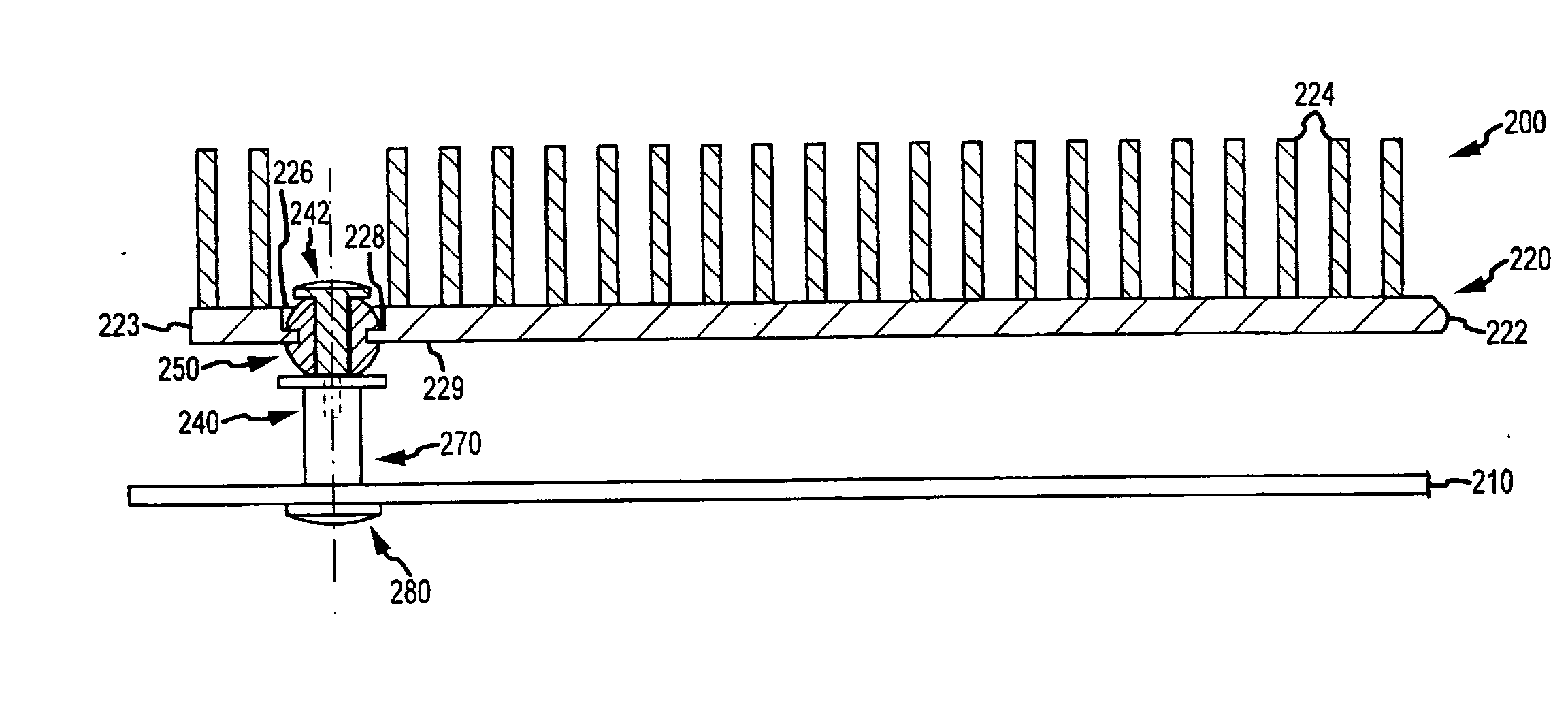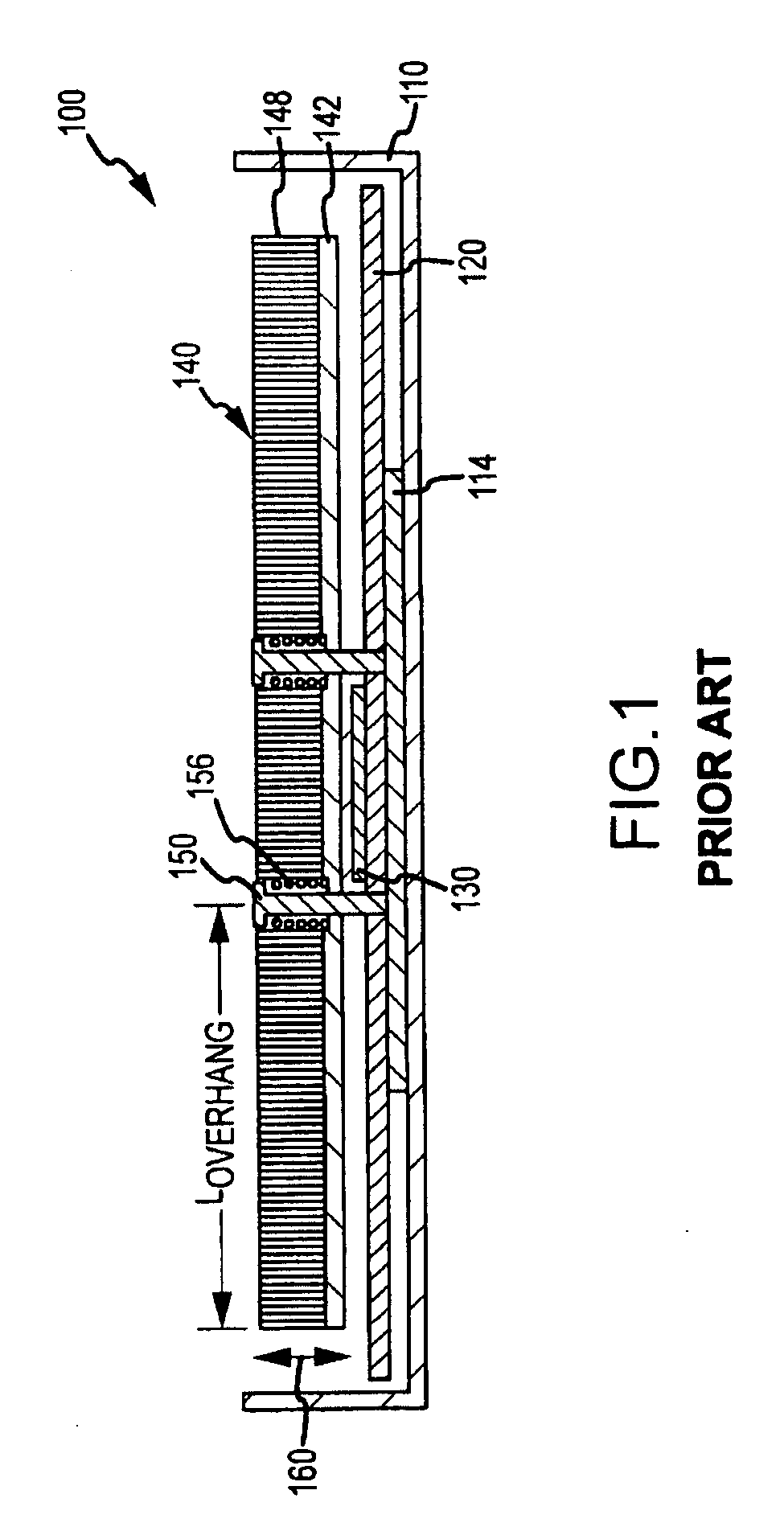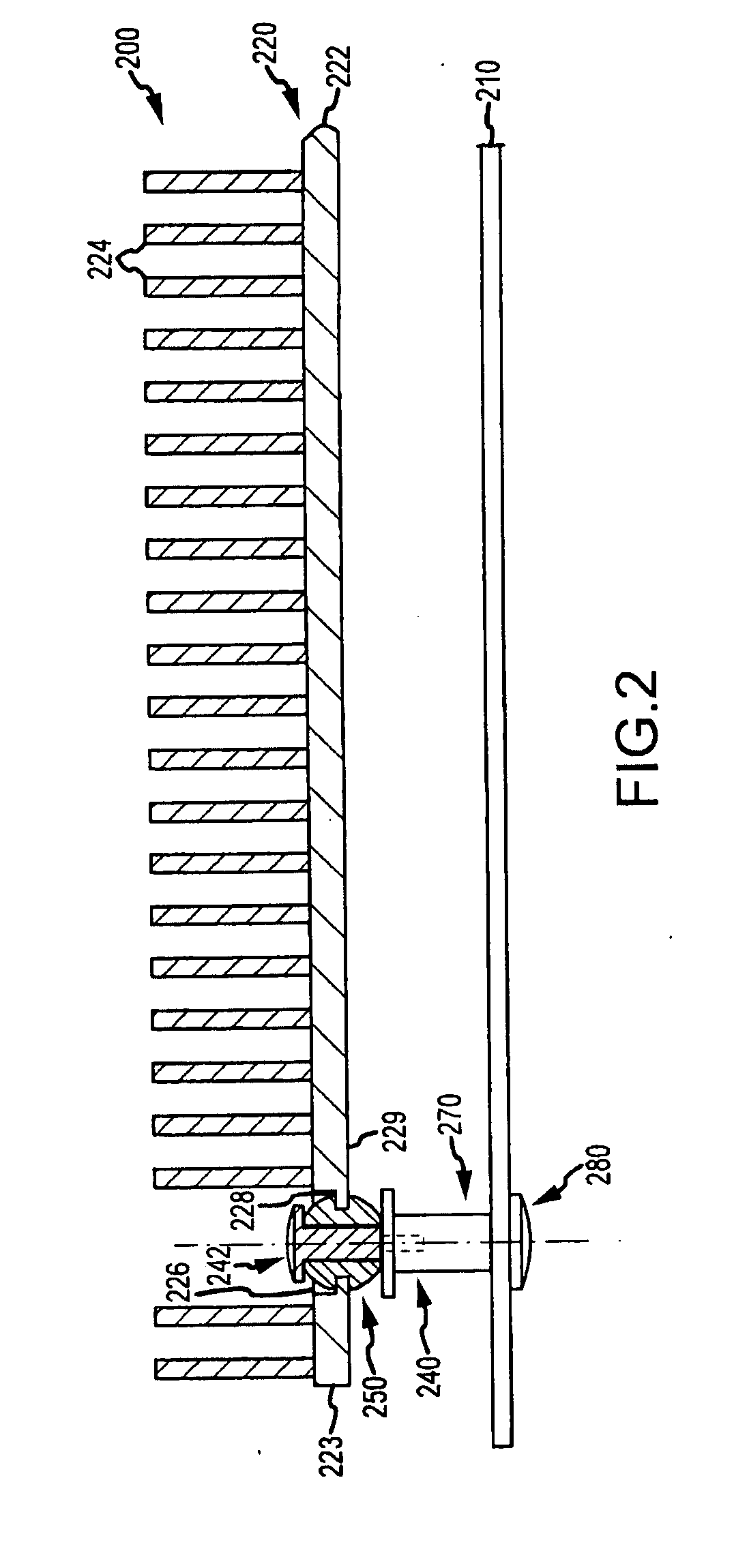Heat Sink Mount for Providing Non-Rigid Support of Overhanging Portions of Heat Sink
a heat sink and non-rigid technology, applied in the direction of electrical apparatus casings/cabinets/drawers, instruments, semiconductor/solid-state device details, etc., can solve problems such as “at risk” or overhanging portions of heat sinks
- Summary
- Abstract
- Description
- Claims
- Application Information
AI Technical Summary
Benefits of technology
Problems solved by technology
Method used
Image
Examples
Embodiment Construction
[0022]Briefly, embodiments of the present invention are directed to mounting assemblies for use with heat sinks that are used to cool electronic components, e.g., a CPU or the like, within a chassis or box such as a computer system / server housing. The mounting assemblies may be thought of as low-force, outboard heat sink mounts that are provided to augment primary heat sink mounts (and, typically, to not interfere or effect these primary mounts) to absorb dynamic forces experienced by outboard or overhanging portions of heat sinks. The present invention is also directed toward computing devices such as servers that incorporate the heat sink mounting assemblies described, and the following description illustrates partial views of such computing systems to stress features of the mounting assemblies. However, it should be understood that these assemblies can be implemented to modify the computing system 100 of FIG. 1 (e.g., the mounting assemblies may be used to supplement the primary ...
PUM
 Login to View More
Login to View More Abstract
Description
Claims
Application Information
 Login to View More
Login to View More - R&D
- Intellectual Property
- Life Sciences
- Materials
- Tech Scout
- Unparalleled Data Quality
- Higher Quality Content
- 60% Fewer Hallucinations
Browse by: Latest US Patents, China's latest patents, Technical Efficacy Thesaurus, Application Domain, Technology Topic, Popular Technical Reports.
© 2025 PatSnap. All rights reserved.Legal|Privacy policy|Modern Slavery Act Transparency Statement|Sitemap|About US| Contact US: help@patsnap.com



